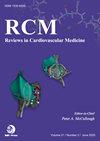摘要
院外心脏骤停(OHCA)是导致全球死亡的主要原因,全球存活率约为 7%。提高存活率的关键因素包括目击者骤停、旁观者心肺复苏(CPR)和早期除颤。尽管指南提倡 "生存之链",但旁观者心肺复苏术和除颤率仍未达到最佳水平。为应对这些挑战,出现了一些创新方法,如调度员辅助心肺复苏术(DA-CPR)和基于智能手机的警报。DA-CPR能有效地将紧急呼叫者转变为非专业救援人员,智能手机应用程序也越来越多地用于提醒志愿急救人员注意 OHCA 事件,从而缩短响应时间并提高存活率。与传统的短信相比,基于智能手机的系统可提供实时指导和自动体外除颤器 (AED) 位置,因而具有优势。研究表明,基于应用程序的警报可改善治疗效果,包括提高早期心肺复苏率、提高存活率和改善神经系统治疗效果。此外,无人驾驶飞行器(drones)将自动体外除颤器(AED)快速送达 OHCA 现场的潜力已得到证实,特别是在急救医疗服务响应时间较长的农村地区。尽管技术不断进步,但在确保急救人员培训、有效调度和保持急救人员健康等方面仍然存在挑战,尤其是在冠状病毒病 19 (COVID-19) 大流行期间。大流行期间,由于个人防护设备(PPE)短缺和感染风险增加,一些社区急救人员计划被暂停或修改。不过,通过使用个人防护设备和修订协议进行调整的系统一般都能保持急救人员的参与度和有效性。展望未来,将新技术融入强大的急救人员系统和支持机制对于改善 OHCA 结果和维持有效的响应网络至关重要。Out-of-hospital cardiac arrest (OHCA) is a leading cause of death worldwide, with a low survival rate of around 7% globally. Key factors for improving survival include witnessed arrest, bystander cardiopulmonary resuscitation (CPR), and early defibrillation. Despite guidelines advocating for the "chain of survival", bystander CPR and defibrillation rates remain suboptimal. Innovative approaches, such as dispatcher-assisted CPR (DA-CPR) and smartphone-based alerts, have emerged to address these challenges. DA-CPR effectively transforms emergency callers into lay rescuers, and smartphone apps are increasingly being used to alert volunteer first responders to OHCA incidents, enhancing response times and increasing survival rates. Smartphone-based systems offer advantages over traditional text messaging by providing real-time guidance and automated external defibrillator (AED) locations. Studies show improved outcomes with app-based alerts, including higher rates of early CPR, increased survival rates and improved neurological outcomes. Additionally, the potential of unmanned aerial vehicles (drones) to deliver AEDs rapidly to OHCA sites has been demonstrated, particularly in rural areas with extended emergency medical services response times. Despite technological advancements, challenges such as ensuring responder training, effective dispatching, and maintaining responder well-being, particularly during the coronavirus disease 19 (COVID-19) pandemic, remain. During the pandemic, some community first responder programs were suspended or modified due to shortages of personal protective equipment (PPE) and increased risks of infection. However, systems that adapted by using PPE and revising protocols generally maintained responder participation and effectiveness. Moving forward, integrating new technology within robust responder systems and support mechanisms will be essential to improving OHCA outcomes and sustaining effective response networks.

 求助内容:
求助内容: 应助结果提醒方式:
应助结果提醒方式:


